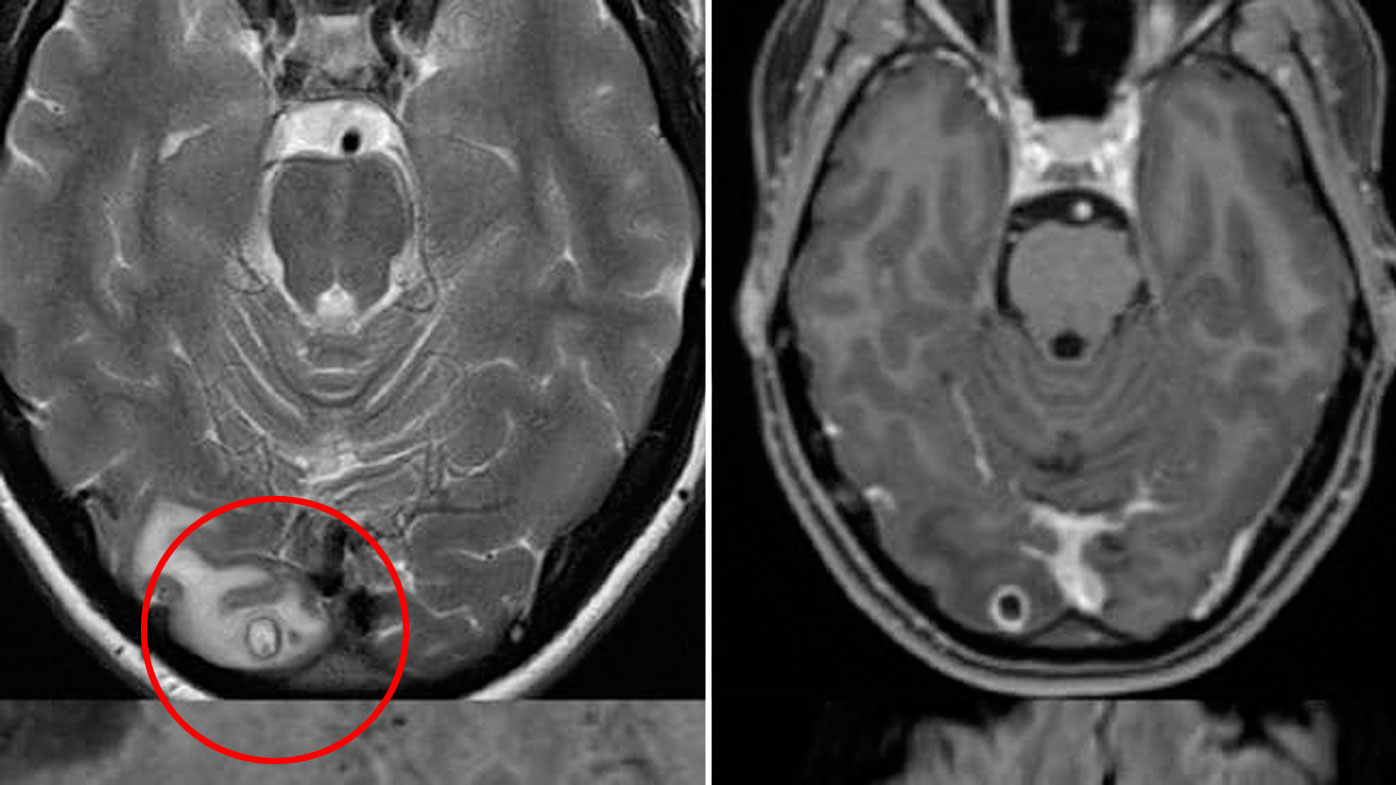A live parasitic worm has been found inside the brain of a 64-year-old
Australian woman, marking the first case of the infection in humans.
The discovery was made by doctors and researchers at the Australian
National University (ANU) and Canberra Hospital after they found a live
8 cm (3.15 inches) roundworm in the woman.
The Ophidascaris robertsi roundworm – whose usual host is a carpet
python – was pulled from the patient after brain surgery – alive and
wriggling. The worm’s larvae were also suspected to have infected other
organs in the woman’s body, including her lungs and liver.
“This is the first-ever human case of Ophidascaris to be described in the
world,” Sanjaya Senanayake, an expert on infectious diseases at the ANU
and Canberra Hospital said in a statement.
“To our knowledge, this is also the first case to involve the brain of any
mammalian species, human or otherwise.
“Normally the larvae from the roundworm are found in small mammals
and marsupials, which are eaten by the python, allowing the life cycle to
complete itself in the snake.”
The researchers, who published their findings in the Emerging Infectious
Diseases journal, said the woman probably picked up the infection from
Warrigal greens, a type of native grass, she collected near her home and
then cooked.
The grasses are a habitat for pythons who would have shed the parasite’s
eggs through their faeces.
Ophidascaris robertsi roundworms are common to carpet pythons and live
in a python’s oesophagus and stomach.
Described by ANU as “incredibly resilient”, roundworms can thrive in a
wide range of environments.
The researchers say the woman, from the southeastern state of New South
Wales, was probably infected from touching the native grass or after
eating it.
Canberra Hospital’s director of clinical microbiology and associate
professor at the ANU Medical School, Karina Kennedy, said the
woman’s symptoms first appeared in January 2021 and, as they worsened
over a period of three weeks, she was admitted to hospital.
“She initially developed abdominal pain and diarrhoea, followed by
fever, cough and shortness of breath. In retrospect, these symptoms were
likely due to migration of roundworm larvae from the bowel and into
other organs, such as the liver and the lungs. Respiratory samples and a
lung biopsy were performed; however, no parasites were identified in
these specimens,” she said.
“At that time, trying to identify the microscopic larvae, which had never
previously been identified as causing human infection, was a bit like
trying to find a needle in a haystack.”
By 2022, the woman was experiencing forgetfulness and depression,
prompting an MRI scan, which showed a lesion in her brain.
When a hospital neurosurgeon investigated, they were shocked to
discover the worm, whose identity was later confirmed through
parasitology experts.
Senanayake said the case underlined the growing risk of disease passing
from animals to humans.
“There have been about 30 new infections in the world in the last 30
years. Of the emerging infections globally, about 75 percent are zoonotic ,
meaning there has been transmission from the animal world to the human
world. This includes coronaviruses,” he said.
“This Ophidascaris infection does not transmit between people, so it
won’t cause a pandemic like SARS, COVID-19 or Ebola . However, the
snake and parasite are found in other parts of the world, so it is likely that
other cases will be recognised in coming years in other countries.”
The woman, who had not recovered fully from a bout of pneumonia
before she was infected with the worm, continues to be monitored by
specialists.










